Editing historical stereoscopic printsWritten by Paul BourkeFebruary 2022 Presentation: Editing historical stereoscopic prints. EPFL, Switzerland. March.
The following presents one, of many possible, pipelines for preparing historical stereoscopic images (now often called "3D") for viewing on more modern hardware. The examples used here are from a large collection from the Exposition Universelle de 1867 in Paris, from the publishing house of M. Leon & J. Levy. [Credit Library Company of Philadelphia]. It surprises many in the "new" VR industry, based upon head mounted displays, that 3D photography of this sort was being regularly recorded over 150 years ago. The first example presented here is shown below, some of the surrounding yellow frame has already been cropped away and the two halves (left and right eye) centered. The defects seen in the following are common place, for example:
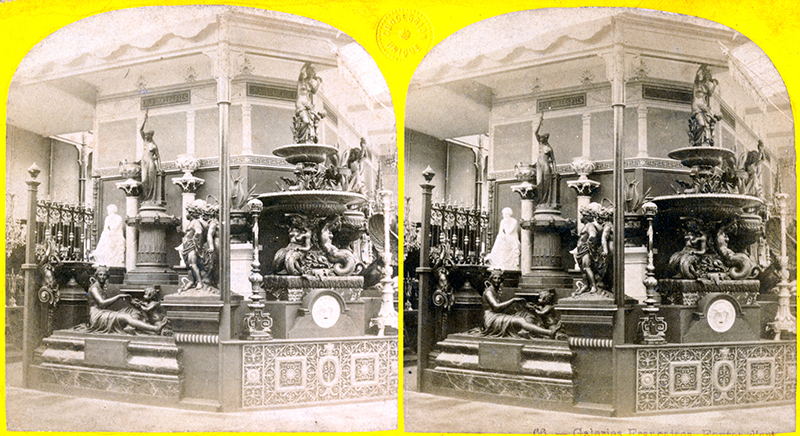
The first stage of the pipeline is to remove the noise. There are a number of products on the market to achieve this, for this exercise the Topaz AI denoise seemed to give the best results. 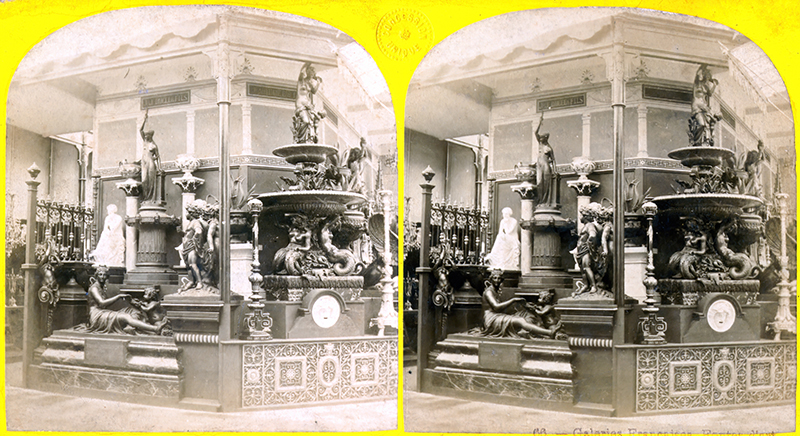
The next stage is to clean defects. The most common method for this is a clone tool in your favourite image editing software. The cloned material might come from a clean local area, or from a clean area on the other eyes image. In the later case it may be necessary to do a histogram equalisation, or other approach so that the exposure is similar between the two eyes. Consideration needs to be made that these two images are to be viewed as a stereoscopic pair so consistent vertical information is important. 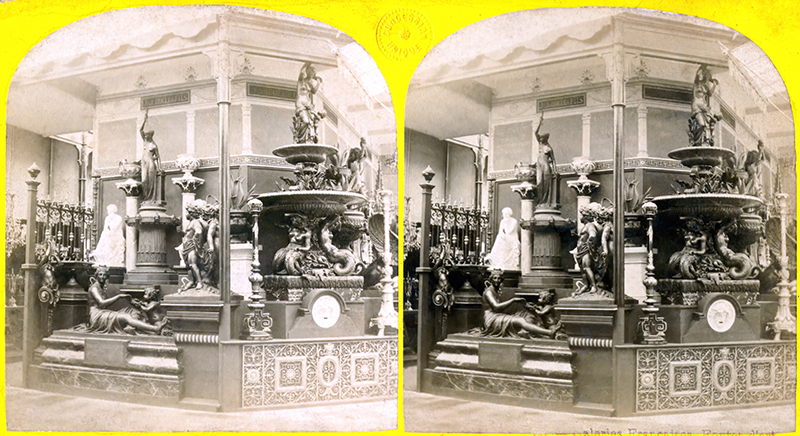
The last image processing stage is to perform the zero parallax alignment, crop the region of interest, and do a histogram equalisation on the cropped image. While these can be performed in any image editor, a faster approach is to use StereoPhoto Maker. Note that the zero parallax choice is different depending on whether the stereoscopic pair is to be viewed on a screen based system (as is the case here) or in a head mounted display. The particular order of the pipeline here allows one to realign and recrop after the image has been cleaned up, the most manual and time consuming stage. If on the other hand one is only targetting screen or HMD viewing then this stage could be moved to earlier in the pipeline as it results in less area to clean up and can led to better equalisation between the two images. 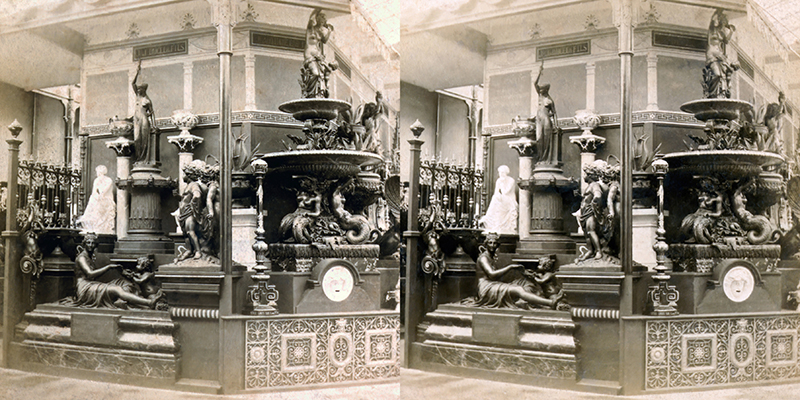
Colourisation is an optional stage, not to everyones taste since the methods generally involving AI do not yield "true" colours, but only one possibility. For public exhibition purposes the author feels the colourisation adds significiantly to the engagement with the subject matter, the viewer should however be notified that the colour is synthetic. The algorithm employed here is DeOldify, available at various sites and from GitHub. 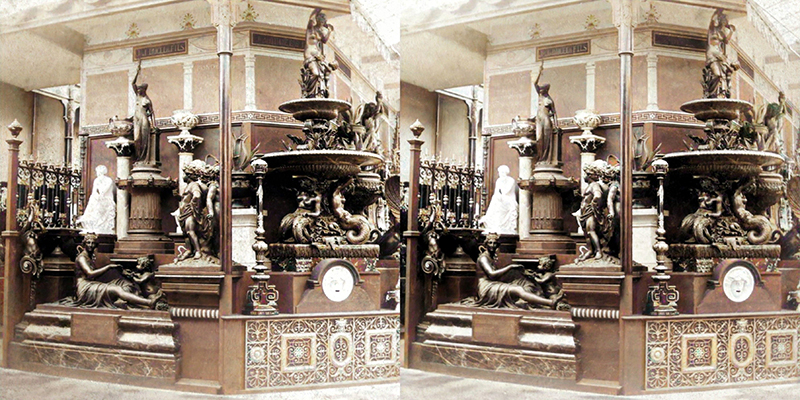
A few more examples are presented below, all from the same collection and all designed for screen based stereoscopic viewing. Original
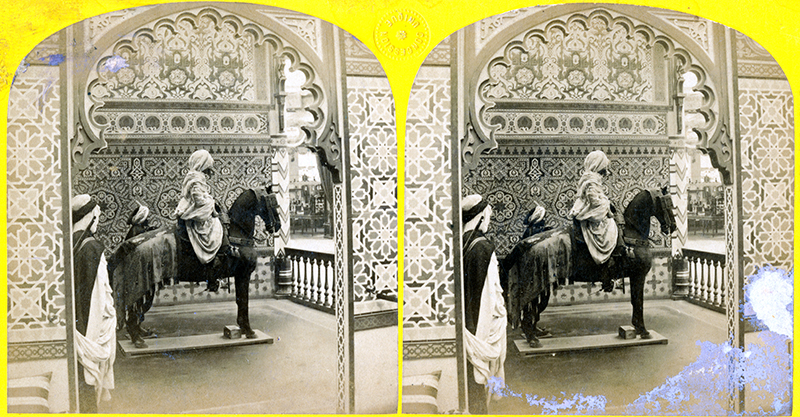
Colourised
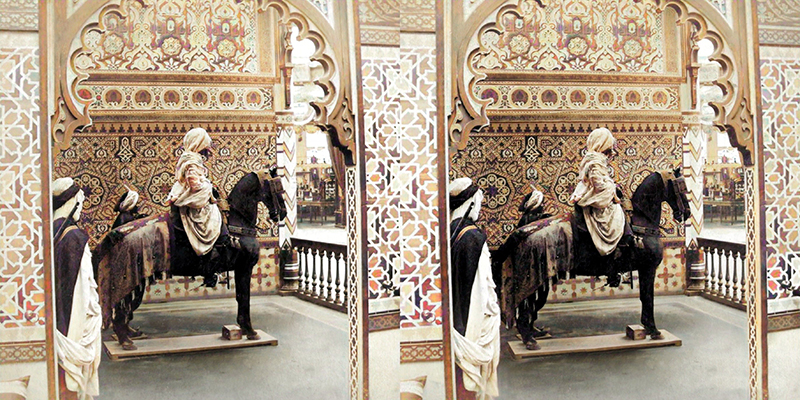
Original
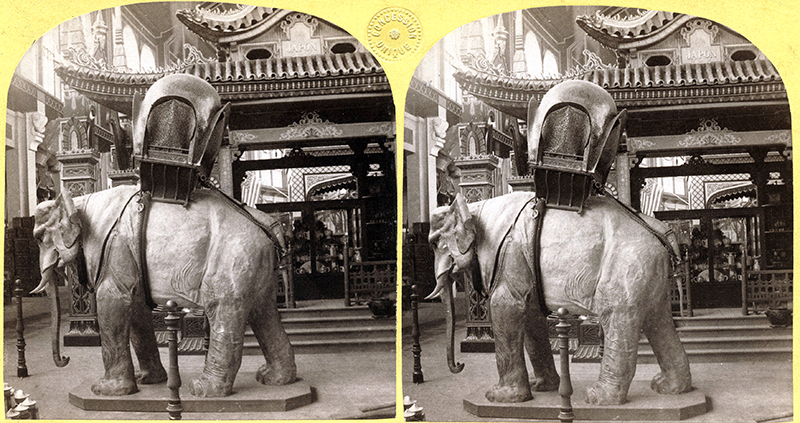
Colourised
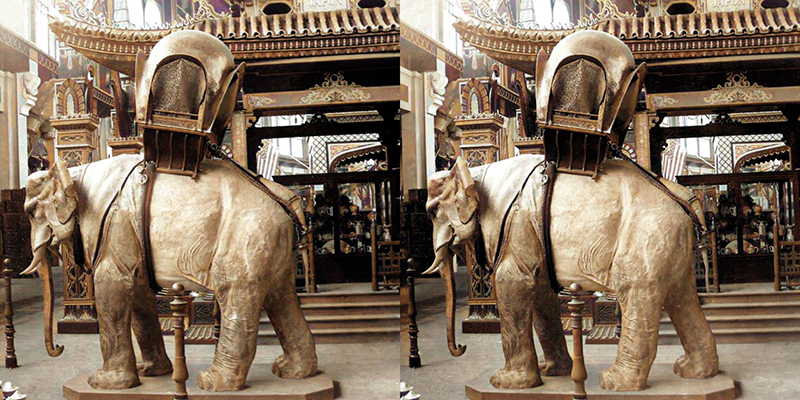
Original
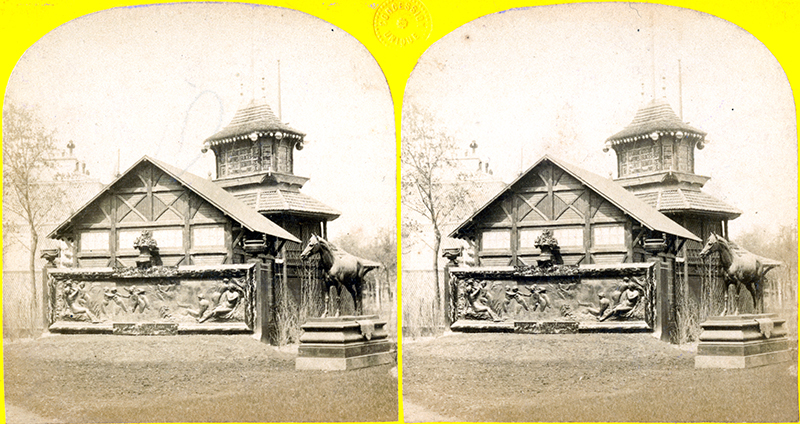
Colourised

Viewing
Critical in a process like this to be able to test the stereoscopic result, main reasons as follows.
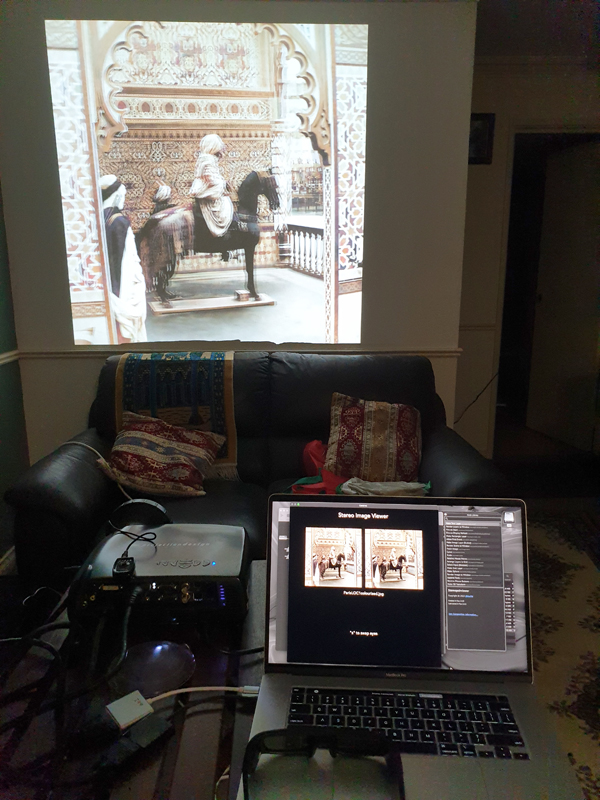 Stereoscopic viewing. Mac Laptop, Projection Design 3D projector. Optoma glasses and third party emitter.
|